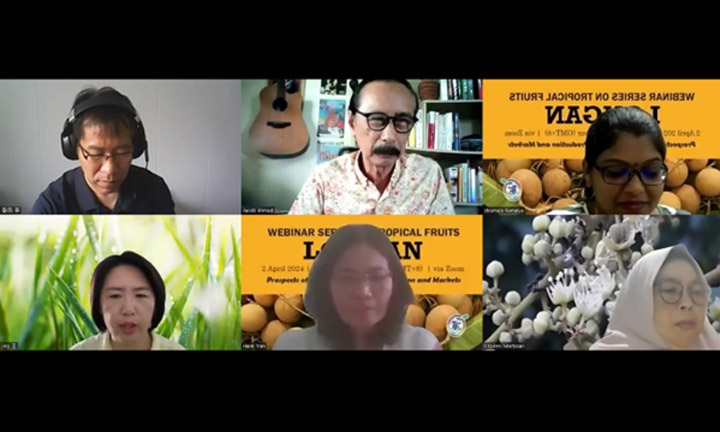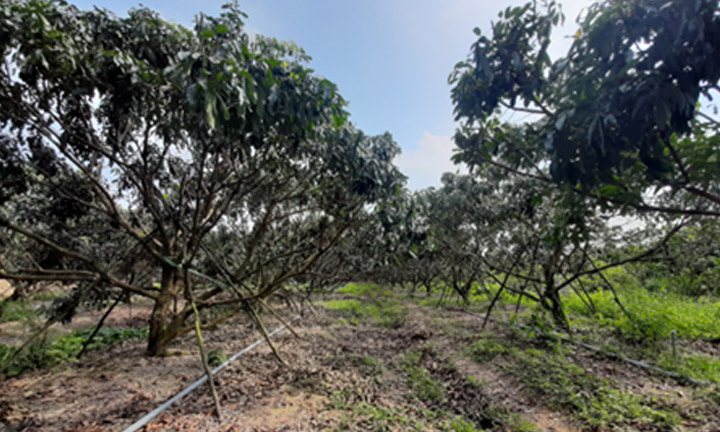While production has generally shown to be stable, there are indications that this tropical fruit can gain traction in the coming years to be another main tropical fruit of choice.
Longan, as with litchi and rambutan, belong to the Sapindaceae family, and is believed to originate in the warm regions of South East Asia and East Asia. The main longan producers are China, Thailand, Myanmar, Vietnam, Cambodia, PR Taiwan, Indonesia, and the Philippines. It is also commercially grown in India, Malaysia, Philippines, Kenya, Australia, South Africa the US (Florida), plus some Latin American countries. Growing areas and production figures are estimates as the fruit is sometimes grouped together with litchi, which belongs to the same family.
While longan is the sixth most important tropical fruits grown in Vietnam covering an area of 82,000 hectares after banana, mango, durian, pomelo and citrus, less areas are cultivated with the fruit in Indonesia or Malaysia. Indonesia however reported an increase in production from 2021 to 2022.
Longan is still a lucrative fruit to cultivate, and its popularity suggests that despite less growth in the past few years, market demand is expected to be stable with steady growth in the coming years. The longan market is also determined by the availability of other fruit types, seasonal production and inconsistent production due to irregular weather patterns.
There have also been efforts to improve productivity in producing countries, by cultivating better varieties, utilizing mixed cropping systems, better postharvest management and good pests and disease control.
Longan is an important fruit grown In the Southern provinces of China and part of the research focus has been on longan genome and population diversity, and varietal incompatibility issues, for example the unilateral cross incompatibility between the Shixia and Yuduo varieties that can be enhanced through the application of boron.
Some of the challenges in longan production are:
- Access to good cultivars – many of the good varieties grown are introduced such as those from Thailand, however, less productive indigenous or local selections are also widely cultivated.
- Irregular weather patterns due to climate change, which impacts floral induction and production.
- Managing pests and diseases – diseases such as witches broom and pests such as fruit borers, fruit flies and bats still contribute to yield decline, especially in Vietnam and Indonesia. IPM packages practiced in Vietnam seem to have a positive effect on reducing pests and diseases.
- Maintaining quality and minimizing postharvest losses along the value chain.
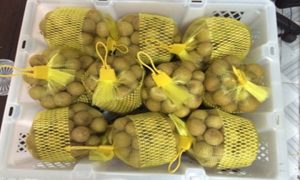
Some of other suggested actions to improve longan production are more research and development on varietal improvements and pest and disease management. Besides this, expanding production areas through replanting with better varieties with good support for seedling quality and distribution. Others include training for farmers, market facilitation and value chain enhancements through processed products to sustain product viability. There is also potential in developing other longan species such as crystal longan or Pometia pinnata.
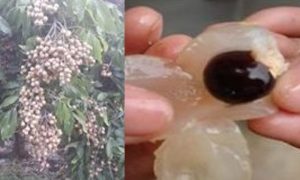
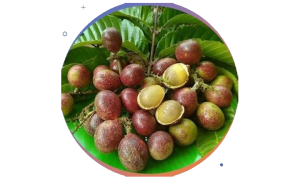
These views were shared and discussed in a recent online webinar workshop organized by International Tropical Fruits Network (TFNet) and Guangdong Academy of Agricultural Sciences (GDAAS), with the theme ‘‘Prospects of expanding Longan production and markets. The event, which was held on 5 April 2024, spotlighted on speakers from China, Malaysia, Indonesia and Vietnam who shared the status and development of the fruit in their countries. One hundred and twenty three (123) participants from 13 countries attended the webinar, mainly from Malaysia, Indonesia, Vietnam, India and China.
The objectives of the webinar were:
- To share information on the common varieties, production status, processing options, market, challenges and opportunities in developing the fruit.
- To share information on research and development focus, including varietal development, best farm practices, postharvest management, pests and diseases management and impact of the weather on longan production.
- To discuss initiatives to enhance the visibility of longan in global markets.
- To establish networking among longan and other tropical fruits stakeholders.
The speakers for the webinar were Dr. Tran Thi My Hanh from Southern Horticultural Research Institute, Vietnam who shared Vietnam’s longan development through her paper ‘The status of longan production in Vietnam – best practices , challenges and sustainability’.
Dr. Wang Jing from the Fruit Tree Research Institute, Guangdong Academy of Agricultural Sciences, China who presented on ‘Investigating the Mechanisms of Unilateral Cross-Incompatibility (UCI) in Longan’, followed by Dr. Chaireni Martasari, from the Indonesian National Research and Innovation Agency, who presented on ‘The status of longan cultivation and market prospects in Indonesia’. Dr. Shiamala D. Ramaiyah from Universiti Putra Malaysia described another species of longan in her presentation on ‘Current status and prospects of crystal longan in Malaysia’.
